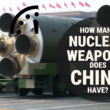How I changed my mind on reprocessing
By Klaus Janberg, April 8, 2015
This very personal story starts in the late 1960s, when I worked as a postdoctoral engineer on a short research project involving the Phénix fast breeder reactor at Cadarache, the research facility that was the center of France’s research into safety for fast breeder reactors. I, like nearly every other nuclear engineer at the time, was convinced that Glenn Seaborg, the Nobel Prize–winning chemist, was right: Breeder reactors and plutonium recycling would provide the world with unlimited cheap electricity. The consequences for the environment would only be positive. When my time at Cadarache came to an end, therefore, I decided to work in the country that was the apparent leader in breeders and reprocessing, and I moved on to General Electric’s Breeder Reactor Development Operation in Sunnyvale, California.
In those days, uranium was becoming more expensive. According to many, it was also becoming scarce. Therefore plutonium’s value was high—at least for military uses, and theoretically for civilian ones as well. When France and Germany decided in 1970 to undertake a large project demonstrating the commercial potential of fast breeder reactors, via the 1200-megawatt Superphénix reactor, I felt the need to participate in this European project. So I moved on again, but this time I took a position on the operator’s side, with the largest German utility, RWE. During the pre-project phase, RWE gave me the opportunity to learn project management at the SNR-300 reactor in Kalkar, Germany, which was then under construction.
RWE also sent me to the Phénix fast breeder reactor in France to follow its connection to the grid; this was part of the preparation for the Superphénix project. I fondly remember the view from the control room of the Phénix reactor (yes, it had a large window). I could see the Rhône and the many fighter planes that would take off from the airfield on the other side of the river. It was a wonderful period, full of optimism. Optimism seemed particularly justified in 1974 when André Giraud, head of France’s Atomic Energy Commission and later minister of industry, announced that international construction of the Superphénix reactor would soon begin. By 1990, construction of two additional 1500-megawatt fast breeder reactors would be completed.
But soon my optimism started to crumble somewhat. I was trying to get a clearer picture of the economics involved in breeder reactors and plutonium reprocessing by doing simple comparisons of the expenses involved in loop breeder reactors, pool breeder reactors, and light water reactors. I took into account the materials that go into constructing them, their ability to vary electricity output as necessary, and so on. I came to the conclusion that fast breeder reactors would always end up with considerably higher capital costs than light water reactors—at least 30 to 50 percent higher. I reluctantly concluded that commercial fast breeder reactors would not succeed in my generation.
Unless, of course, changes in fuel cycle costs came to the rescue. And indeed, in the late 1960s, the United Kingdom’s Atomic Energy Authority had begun offering reprocessing at unbeatable prices—just $15 per kilogram of heavy metal. Eurochemic, a joint European reprocessing facility, offered low prices as well. So did WAK, a small German reprocessing facility that, despite its affordable prices, still had difficulties filling its order book as of 1971. Uranium prices, on the other hand, were on the increase for several years beginning in about 1975, making things difficult for firms such as Westinghouse, which sold fuel reloads at fixed prices.
Then, in 1976, the German government mandated reprocessing as the only legal approach to the back end of the fuel cycle. This forced the nation’s utilities to pursue reprocessing. But WAK was the only reprocessing facility in the whole country. So fulfilling the government’s mandate meant relying on foreign contracts, and BNFL—a successor to Britain’s Atomic Energy Authority—lacked capacity after a fire at its reception facility. I moved back to Germany to negotiate reprocessing contracts with COGEMA, predecessor of the French nuclear energy firm Areva, and to identify storage capacity for spent fuel until COGEMA could begin receiving fuel. In parallel we developed dry cask storage as an alternative.
But by this time—1978—COGEMA would offer reprocessing only under cost-plus conditions, and it expected a hefty profit margin of 25 percent. Meanwhile, big away-from-reactor storage pools with aircraft and sabotage resistance would not be online for some time. They were also more expensive than the alternative—dry cask storage. By 1979 RWE had scrapped away-from-reactor pool projects in favor of casks.
In 1982 and 1983 COGEMA came online with big pools that offered relief to German utilities. But the future of reprocessing became bleak nevertheless. When COGEMA quoted the owners of the Superphénix reactor unexpectedly high prices for reprocessing, the owners decided to build a large on-site storage pool for their spent fuel. That was the real end of fast breeder reactors in France—not the political shutdown decision in 1998. The cost realities had sunk in. Breeders without a commercial fuel cycle just don’t make sense.
The German utilities realized in 1989 that reprocessing would entail unacceptable costs, even without taking into account the expense of fabricating plutonium-uranium mixed oxide fuel. And the high burn-up rates of uranium fuel made reprocessing even less economical. At the same time, it was becoming clear that uranium was not scarce at all. In fact, it was now available again at decent prices. Also, reprocessing projects in the United Kingdom and Japan never experienced the same production success as in France, and economic prospects for reprocessing became very dark.
Today, plutonium is no longer a high-value asset on a utility’s balance sheet. It is at best a zero-value item. But except in countries that might successfully develop cheap breeder reactors and an affordable fuel cycle (China, India, and Russia still maintain such hopes), it’s more likely to be a negative-value item. One fears that privately owned utilities will become hostages of their own plutonium. For national utilities, meanwhile, it is the government—or, more precisely, the taxpayer—who will become the hostage.
Is it possible, someday, that Seaborg will be proven right after all? Well, I concluded more than 30 years ago that commercial fast breeder reactors would not become a reality in my generation. The same still appears to be true for the young generation today. And this conclusion does not even take into account the proliferation threat that plutonium poses.
Topics: Nuclear Energy, Nuclear Weapons
Share: [addthis tool="addthis_inline_share_toolbox"]














